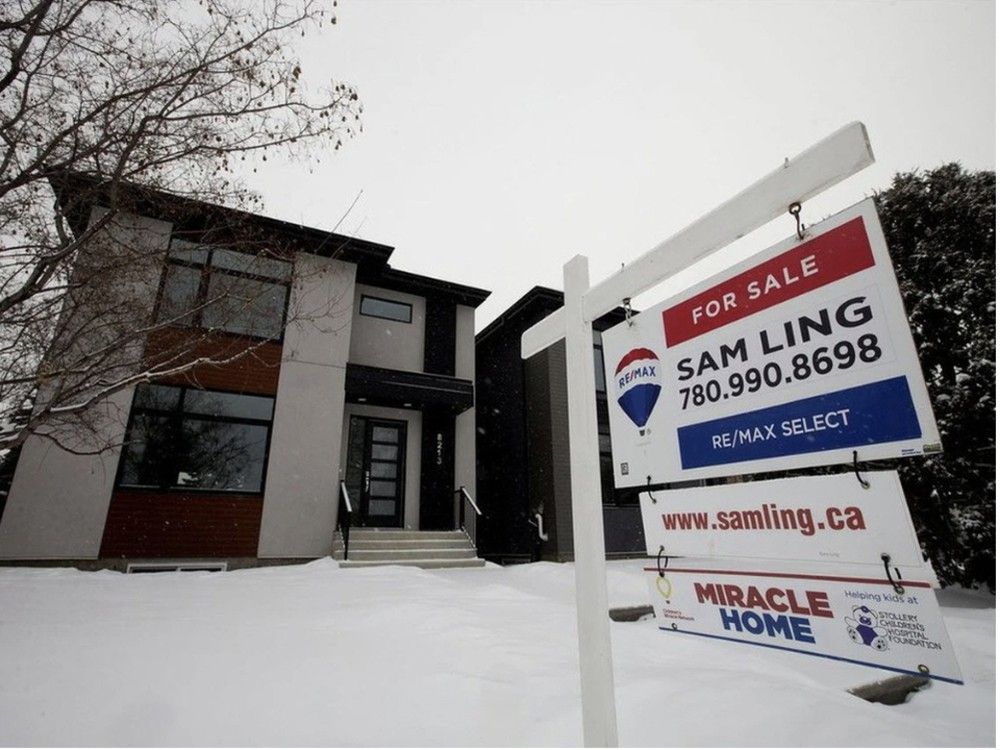Edmonton's affordability lure eroding slightly, tariff threat clouds 2025: Conference Board of Canada

"All things considered, total migration to Edmonton is going to be decent, but not as red hot as as it has been."
Published Jan 25, 2025 • 3 minute read
Join the conversation
Mass migration to Edmonton over the past few years has been a main driver boosting the economy but resulting demand has slightly eroded the housing market, says the latest report from the Conference Board of Canada (CBOC). Photo by Postmedia file
Mass migration to Edmonton over the past few years has been a main driver boosting the economy but resulting demand has slightly eroded the housing market, says the latest report from the Conference Board of Canada (CBOC).
The board’s January 2025 outlook says Edmonton, like most of Canada, can expect its large population influx to slow as the country cuts back on immigration targets. Edmonton’s job market, meanwhile, has been fairly stable over the last few year but slowed in 2024, unable to absorb all the newcomers, resulting in a higher unemployment rate.
Advertisement 2
Story continues below
This advertisement has not loaded yet, but your article continues below.
Sign In or Create an Account
or
View more offers
Article content
Robin Wiebe, a CBOC lead economist, said Edmonton can expect three per cent population growth in 2025, down from last year’s 4.8 per cent. Interprovincial migration is to slow in 2025 onwards.
“Edmonton’s housing has been really affordable, but people notice that, so they move there, and that bids up the price of housing faster than the Canadian average,” Wiebe said. “The Edmonton affordability advantage… is eroding slightly.
“All things considered, total migration to Edmonton is going to be decent, but not as red hot as as it has been.”
Edmonton employment rate forecast to grow
Edmonton in 2024 had a 0.6 per cent increase in employment (which was overwhelmed by new labour force entrants), pushing the city’s unemployment rate to a three-year high of 7.6 per cent, up from 6.0 per cent in 2023. The numbers, however, are still lower than those of the pandemic in 2020 which saw unemployment hit nearly 12 per cent.
CBOC forecasts Edmonton’s 2025 employment to rise by 2.1 per cent, or about 18,000 positions, with strong figures continuing into 2029.
Employment from 2027-2029 is expected to grow faster than the labour force, cutting the unemployment rate to 6.6 per cent by 2029.
Headline News
Get the latest headlines, breaking news and columns.
By signing up you consent to receive the above newsletter from Postmedia Network Inc.
We encountered an issue signing you up. Please try again
Article content
Advertisement 3
Story continues below
This advertisement has not loaded yet, but your article continues below.
Article content
Trump tariffs would put Alberta in the crosshairs
Wiebe said U.S. President Donald Trump’s threat to impose 25 per cent tariffs on Canadian goods starting Feb. 1 would put Alberta in the crosshairs, specifically due to the energy portfolio.
“The energy file is a hot potato politically and if there were to be a tariff and export restrictions and a trade war surrounding the energy like the oil and gas sector — well that will be very difficult for Alberta,” Wiebe said.
While Canadians would be paying more for goods brought from the U.S., the federal response to the tariffs may also “awaken” Canada to the opportunities within its borders, added Wiebe. Tackling the longstanding issue of interprovincial trade barriers, he said, would likely result in a three to four per cent national GDP bump.
Canada’s economy clouded by tariff threats, less immigration
Despite the unknowns, CBOC is forecasting Canada’s GDP to increase by 1.5 per cent in 2025 and increasing a further 1.9 per cent in 2026 after a “sluggish” year.
“While declining interest rates have alleviated some pressure, uncertainty surrounding the trade environment and the impact of weaker population growth are weighing on growth prospects,” said Cory Renner, associate director of economic forecasting at the CBOC.
Advertisement 4
Story continues below
This advertisement has not loaded yet, but your article continues below.
Article content
“Weak population growth will have wide ranging impacts and re-exacerbate labour challenges, reducing the governments’ tax base.”
Housing affordability remains a pressing issue, but the federal government’s decision to cut immigration targets will provide some relief. Efforts by provincial government to support residential construction are expected to ease pressures in Alberta’s housing market in the coming years, adds CBOC.
The threat of tariffs makes the outlook for trade uncertain, despite strong demand from the U.S.
ctran@postmedia.comX: @kccindytran
Recommended from Editorial
'Canada has some challenges': Edmonton Chamber of Commerce pushes biz-friendly agenda for 2025
Edmonton property assessments mailed out as home values rise
'We are your biggest customer': Alberta, Ontario D.C. representatives on Trump tariff challenge
Bookmark our website and support our journalism: Don’t miss the news you need to know — add EdmontonJournal.com and EdmontonSun.com to your bookmarks and sign up for our newsletters.
You can also support our journalism by becoming a digital subscriber. Subscribers gain unlimited access to The Edmonton Journal, Edmonton Sun, National Post and 13 other Canadian news sites. The Edmonton Journal | The Edmonton Sun
Article content
Share this article in your social network










:max_bytes(150000):strip_icc()/GettyImages-21961214021-3599a58838a64364b07b52bda8357d52.jpg)


:max_bytes(150000):strip_icc():focal(1080x247:1082x249)/katy-perry-rock-in-rio-tout-092124-dc690652db5344a3bd0f5eee357d555a.jpg)



